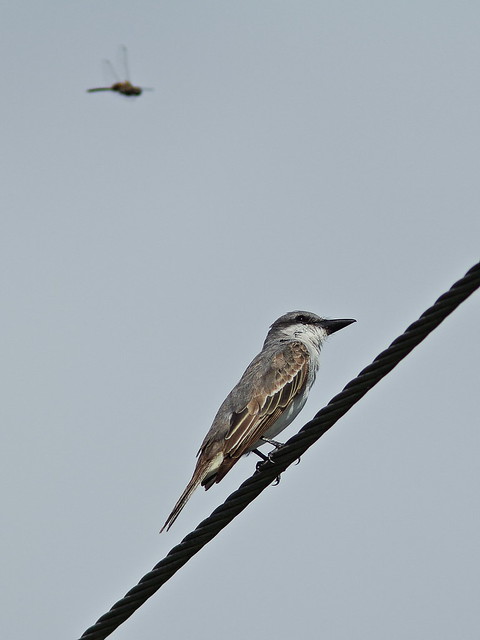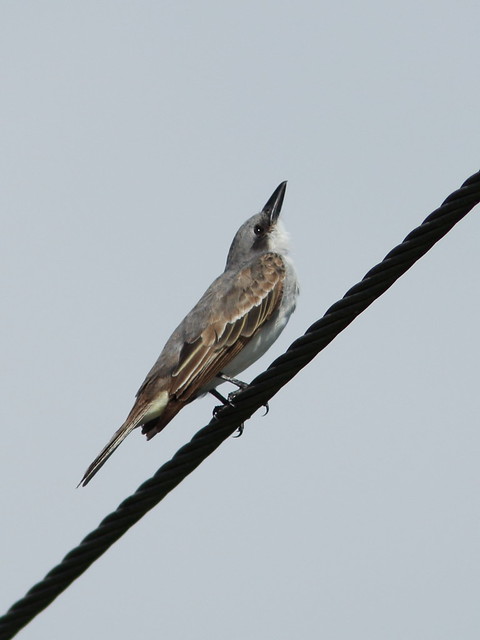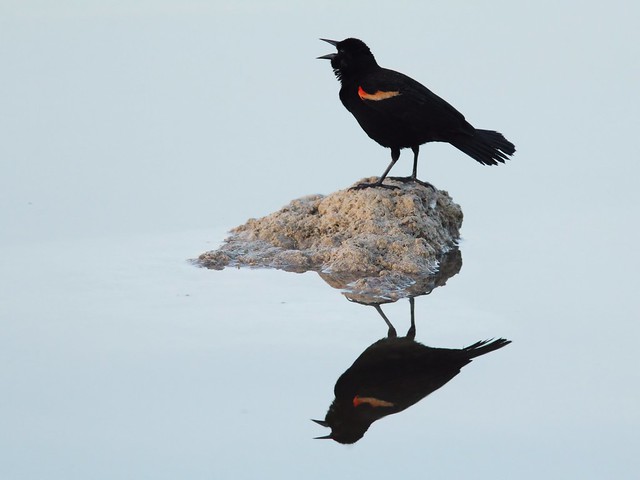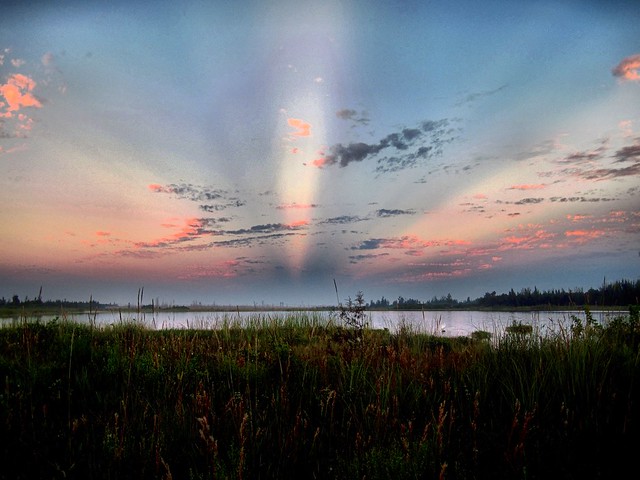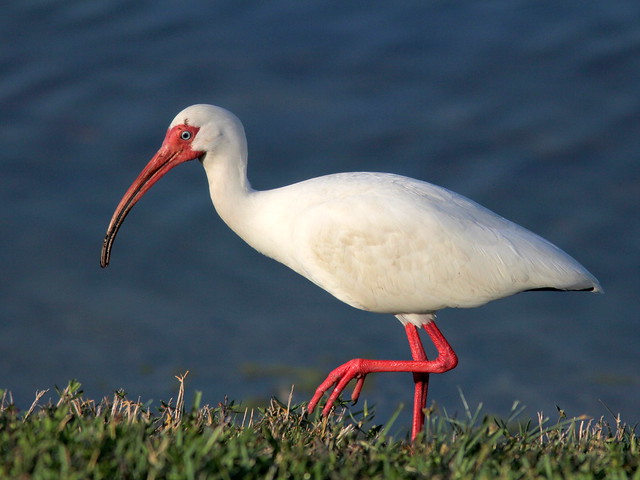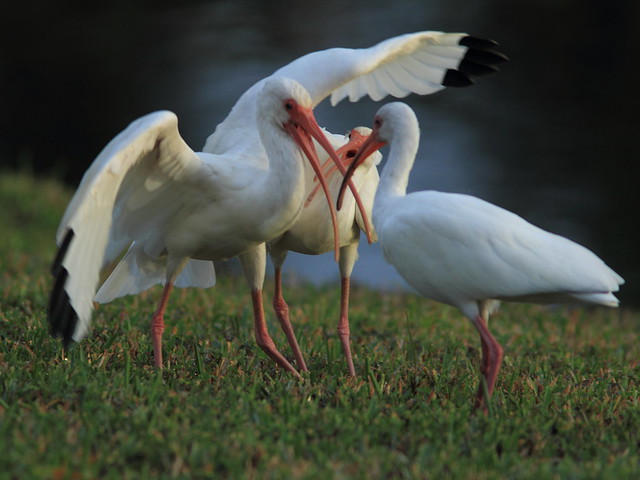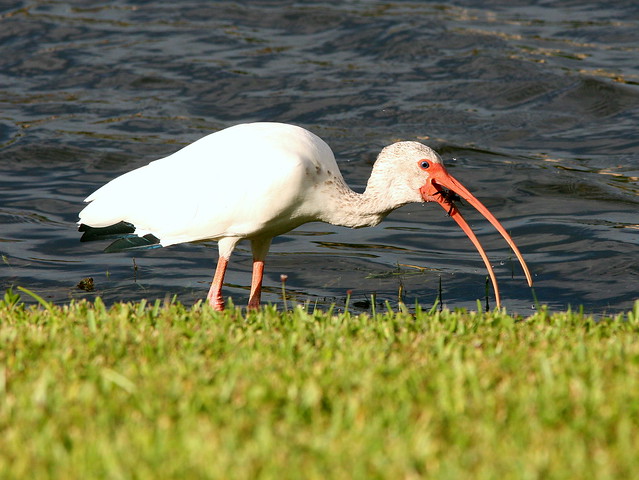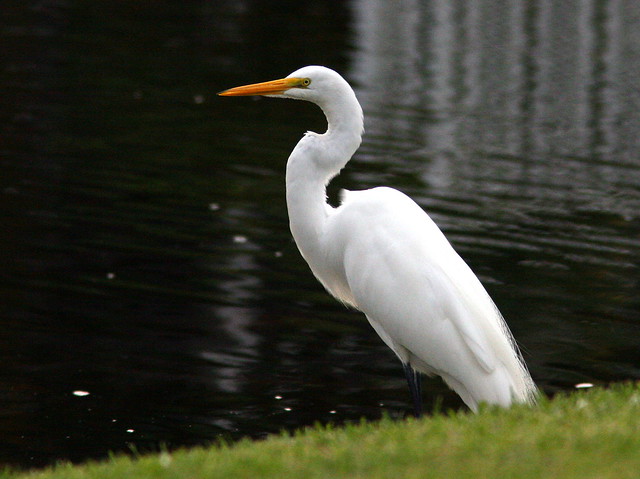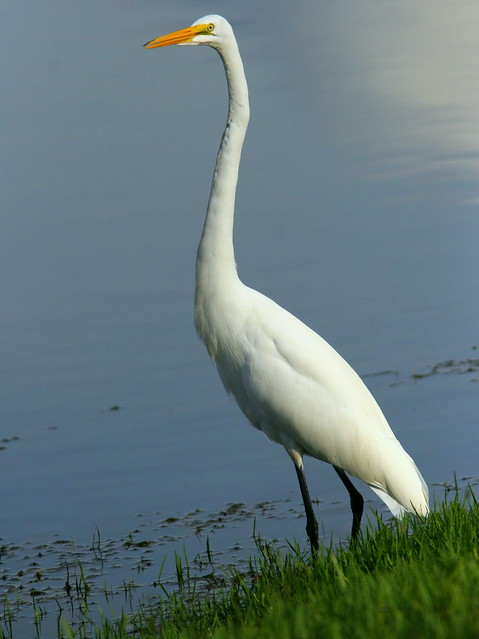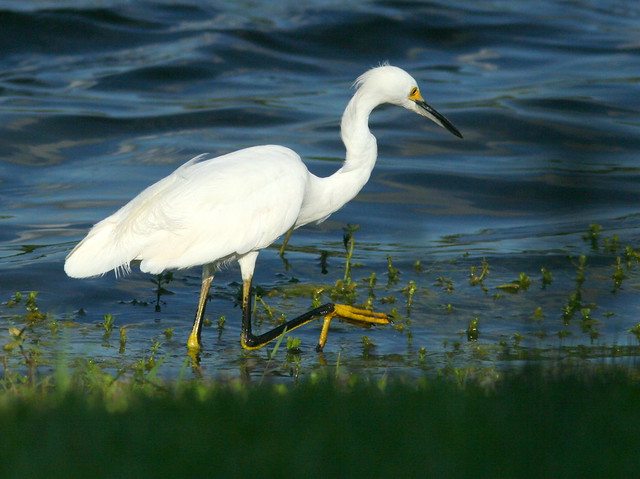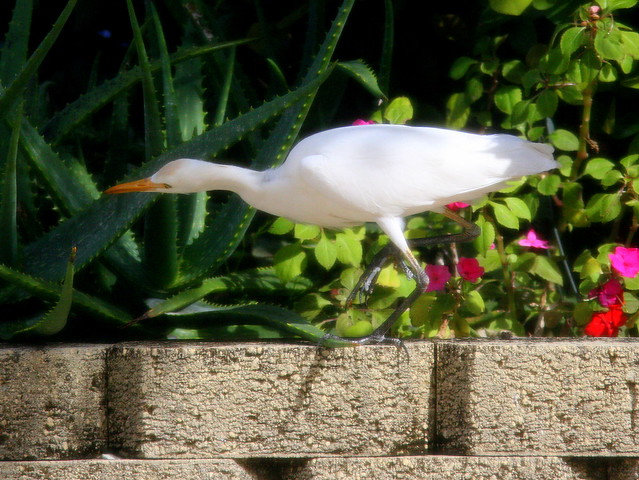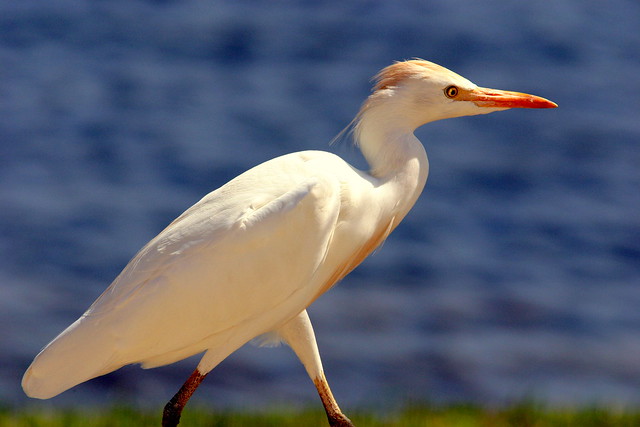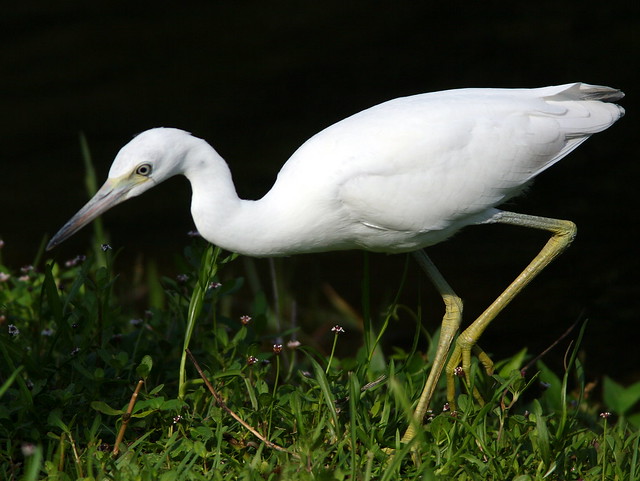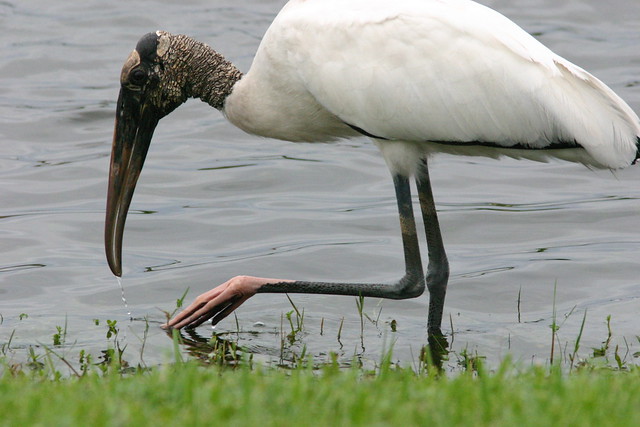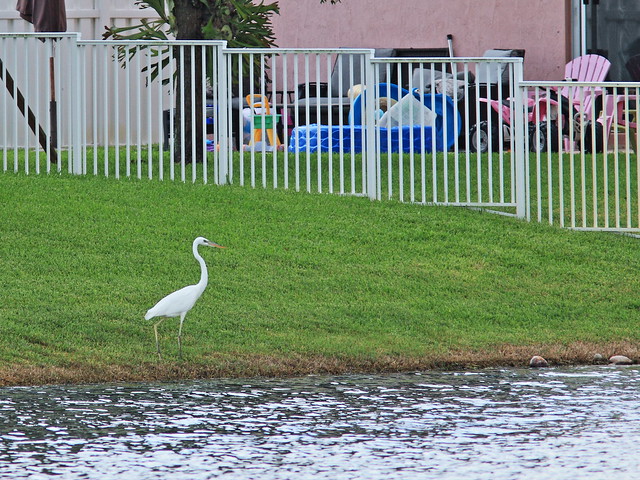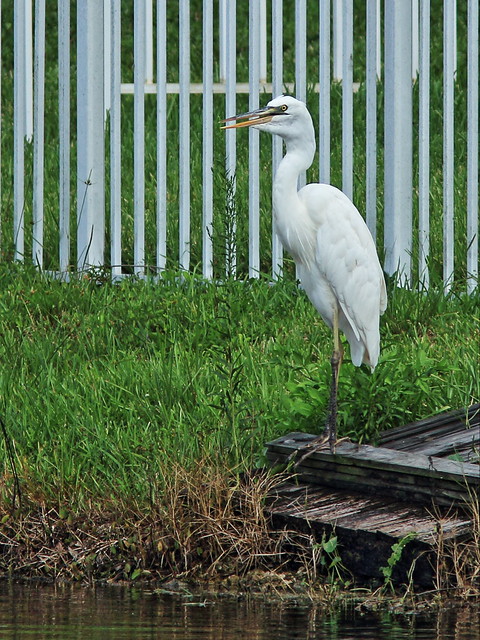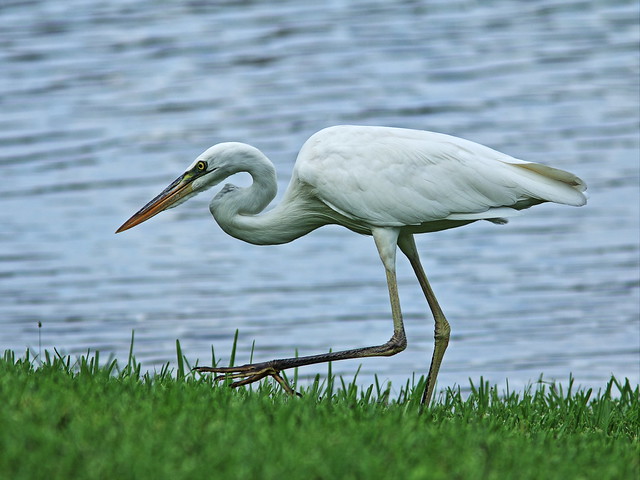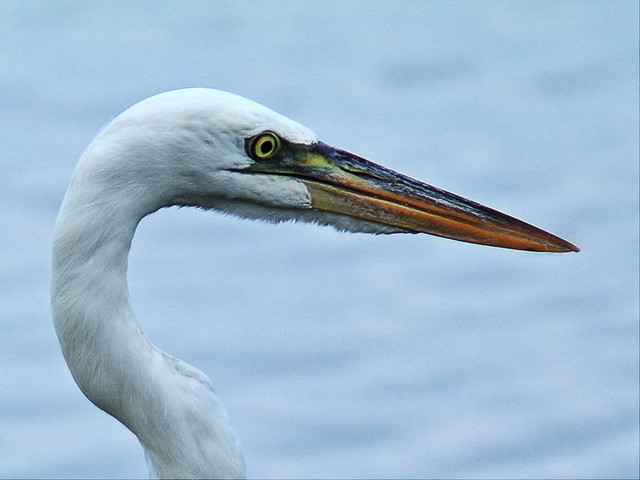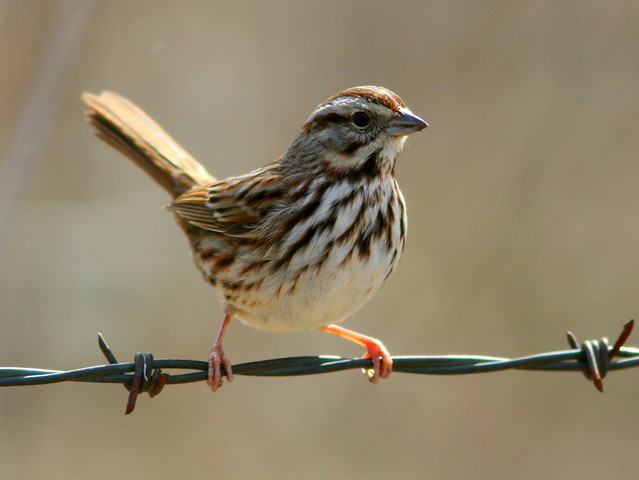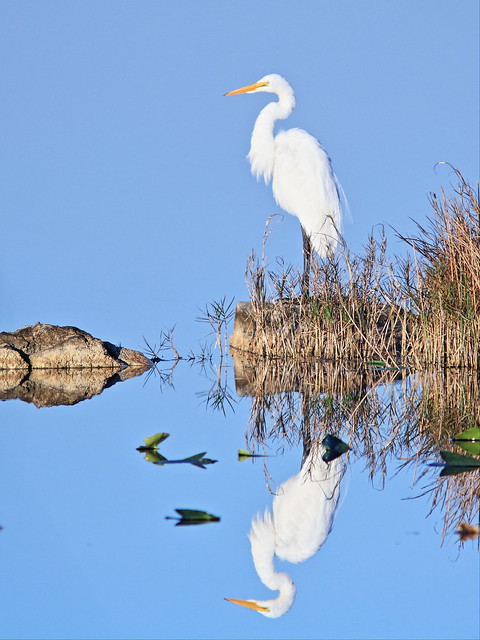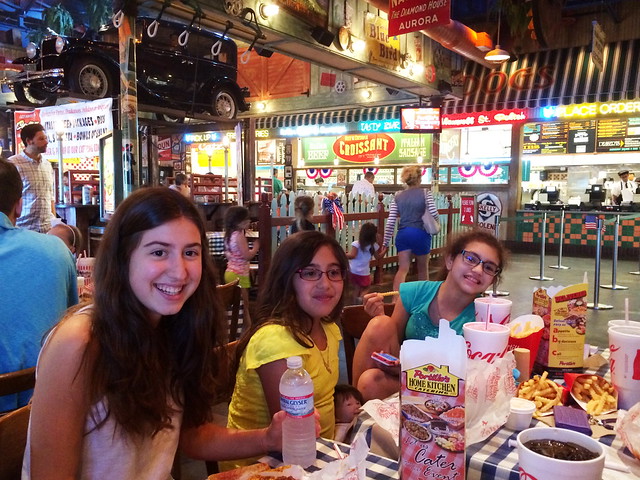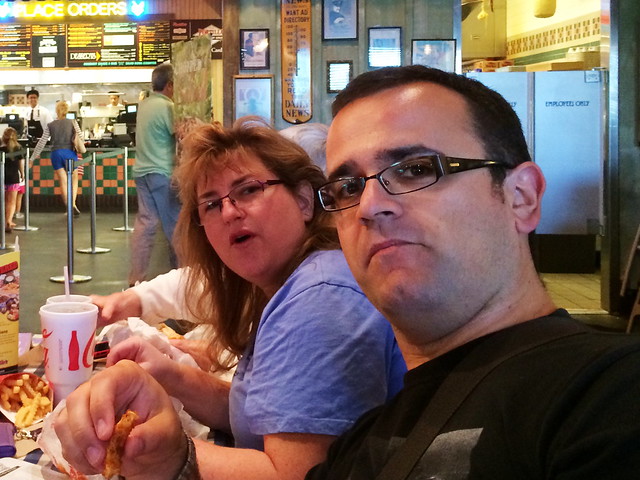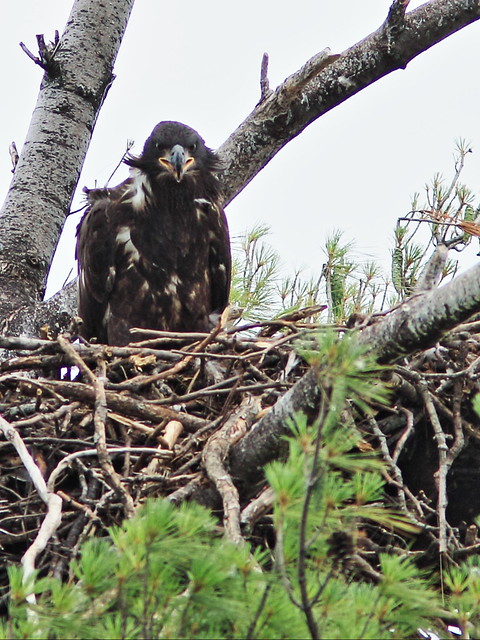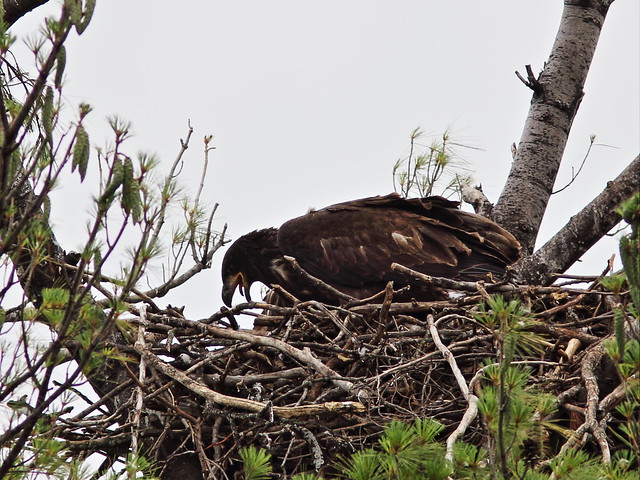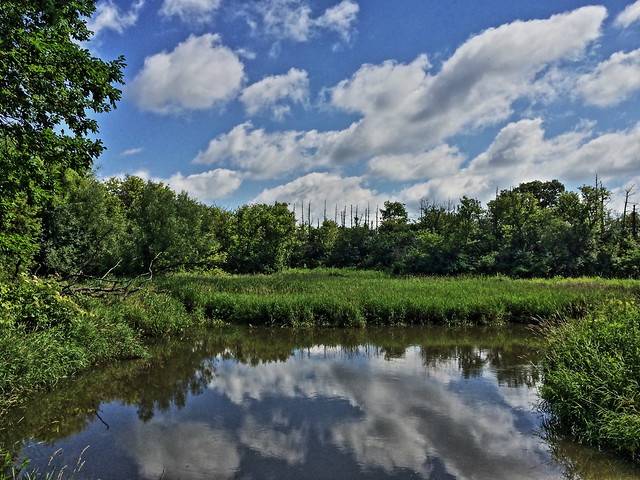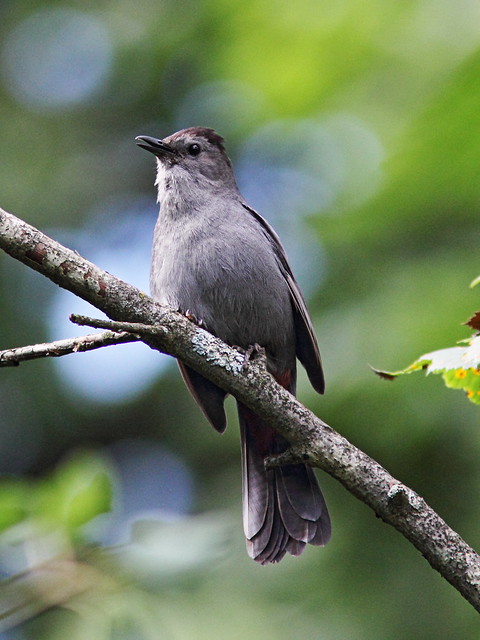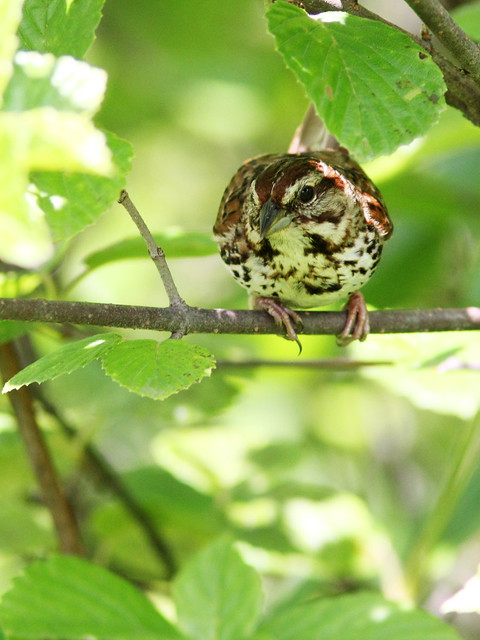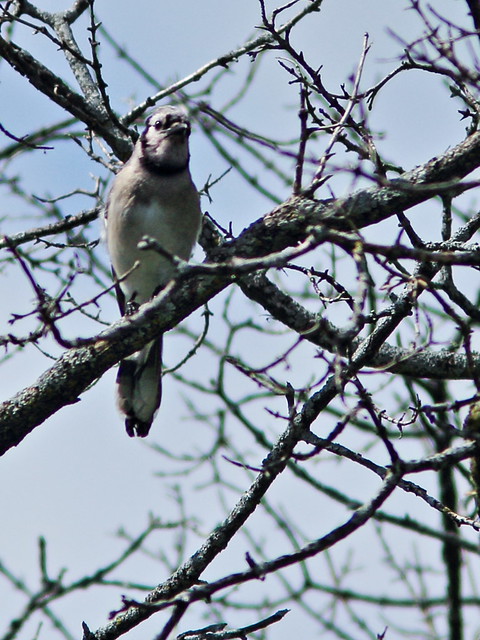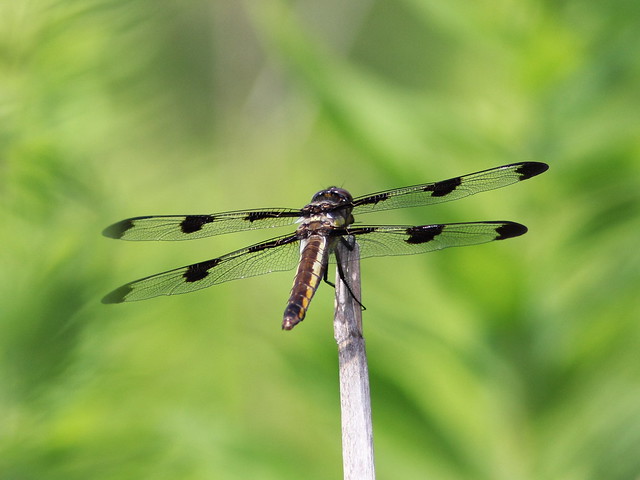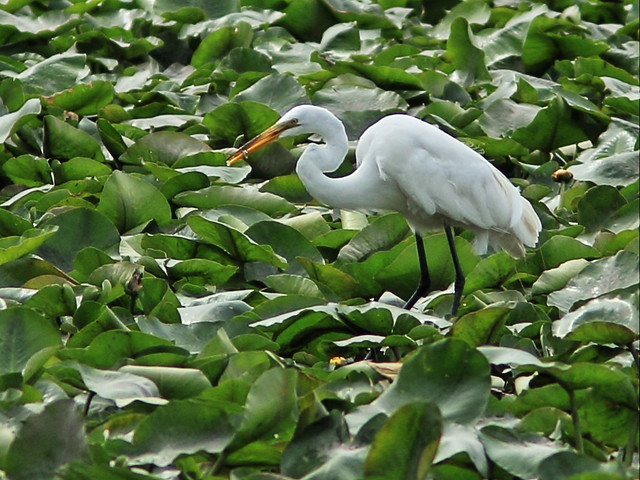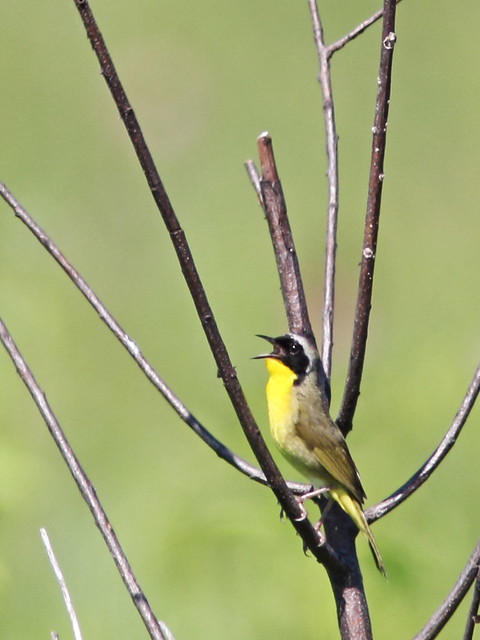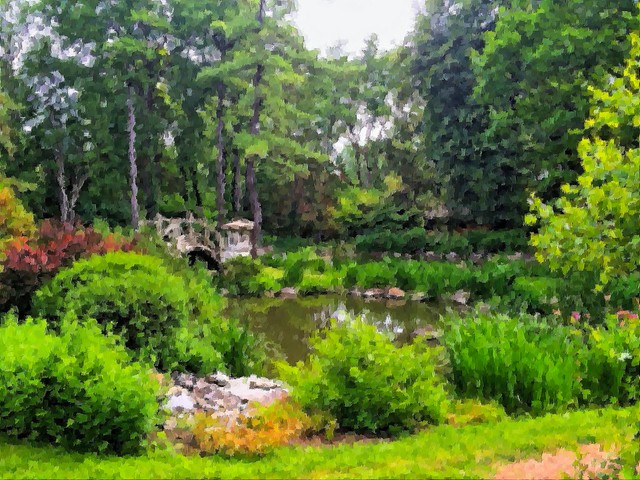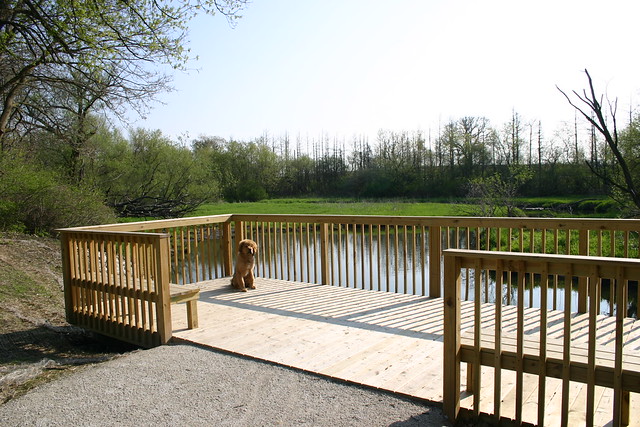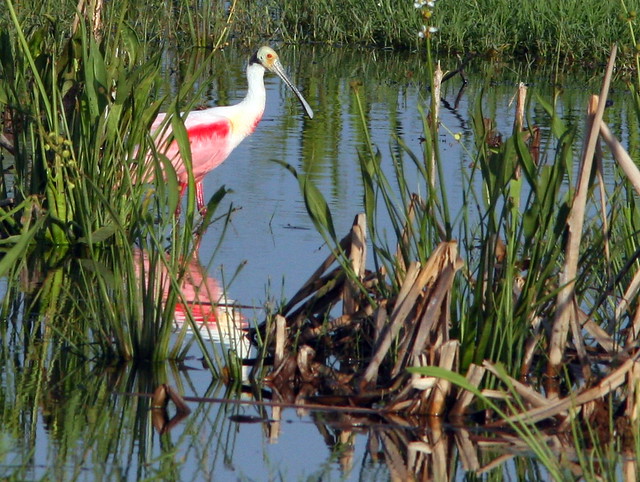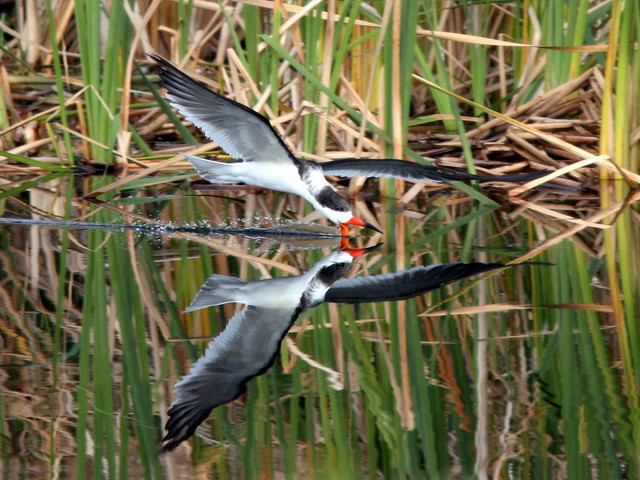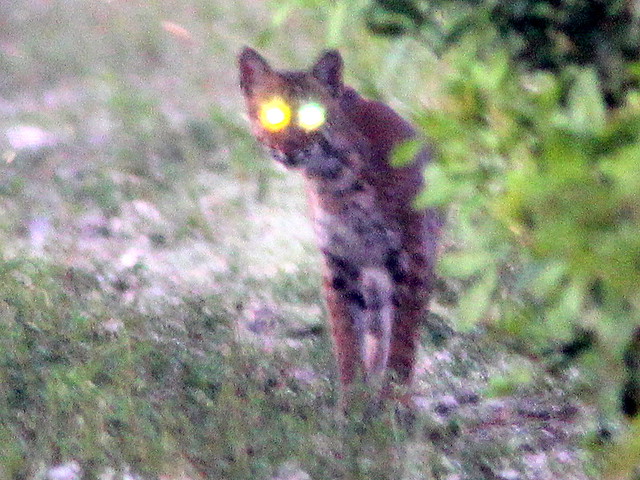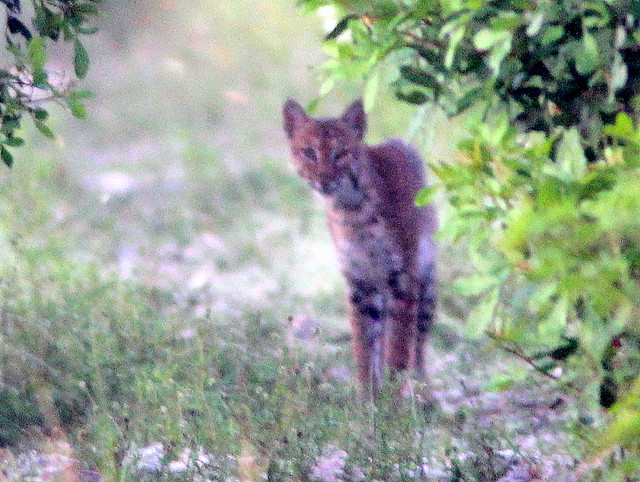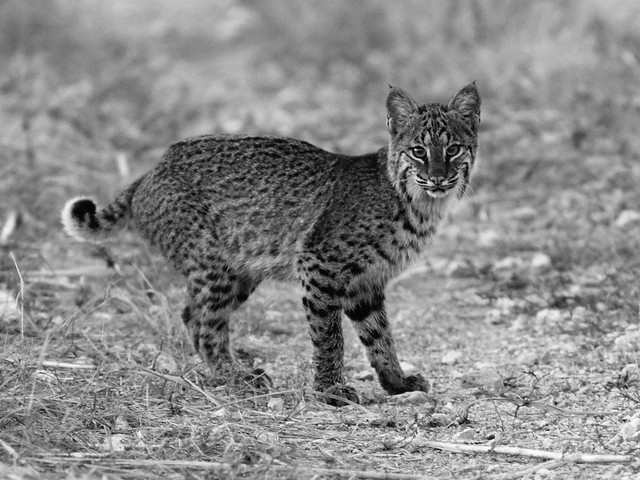We already described the first surprise, the appearance of the first "Great White Heron" subspecies of the Great Blue Heron on our lake. It continued to show up over a 9 day period, but as of this writing has not returned.
One evening the Great White Heron tarried in our back yard until a half hour after sunset. We thought it might spend the night. These photos, taken through the back patio window, are of poor quality but they capture the evening light and some nice poses as the heron engaged in some last-minute foraging along the lake margin.
.
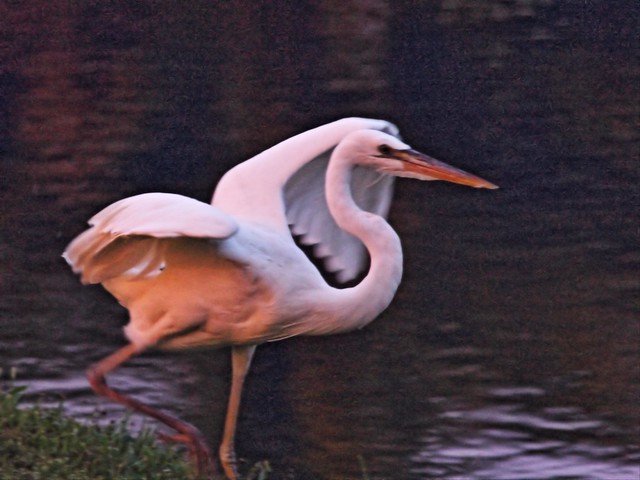
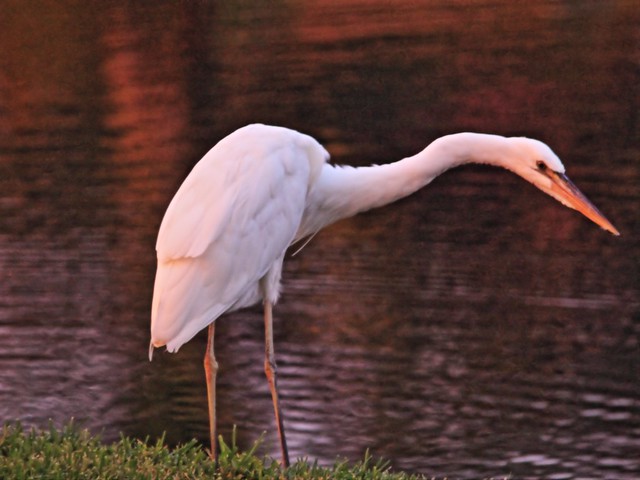
In mid-month the winds started moving in from the north, and we had several rain-free (and almost mosquito-free) mornings, allowing us to resume the habit of taking our mile walk on the gravel road into the wetlands next to our home. As usual, Mary Lou got way up ahead of me as I stopped to click a few sunrise shots.
The water level of Harbour Lake mitigation area was high, discouraging and dispersing waders.
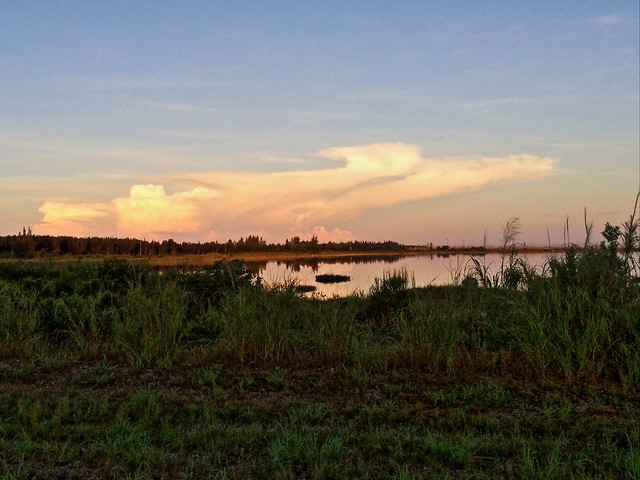
A Great Egret flew overhead.
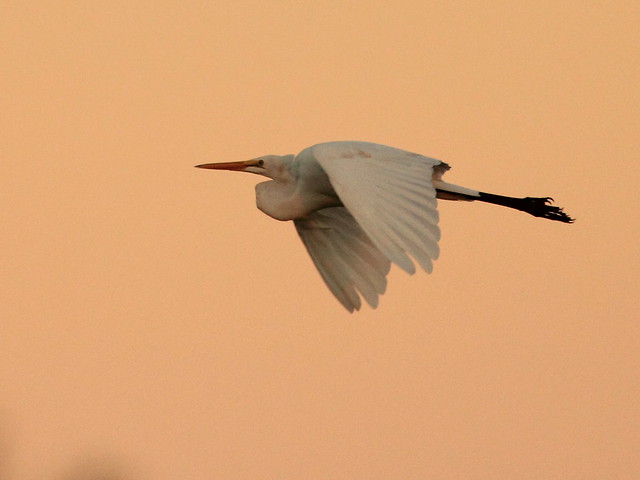
Butterflies were still dormant, soaking up the first rays before taking off, making them easy subjects. This is an almost perfect specimen of a White Peacock:
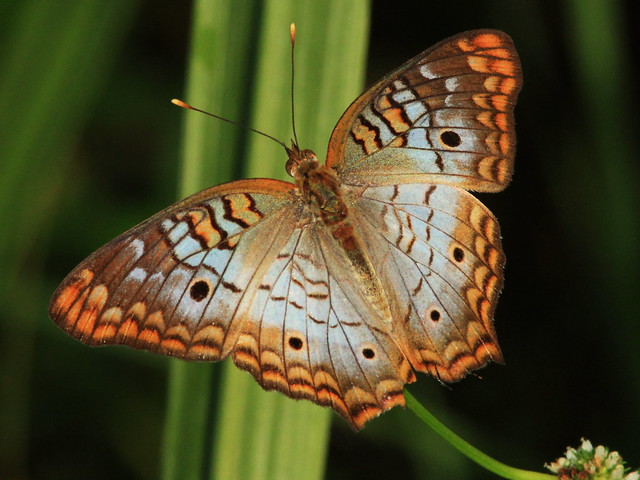
Construction of this roadway began about 12 years ago. It was designed as a 4 lane divided parkway, to connect our neighborhood (which is now isolated by the protected wetlands to the west) with points to the north and US-27, about 2 miles west of our home. Presently we must drive an extra 5 miles east, north and finally west just to access the highway. Problems in acquiring a small portion of the right-of-way and the economic downturn in 2008 delayed the project indefinitely, to our joy. Once completed it will forever change the character of the wild lands it invades.
As I ambled along the path on the edge of the gravel road, a small bird burst up from the roadside grass,only about 2 yards away, near this point on the right side of the road.
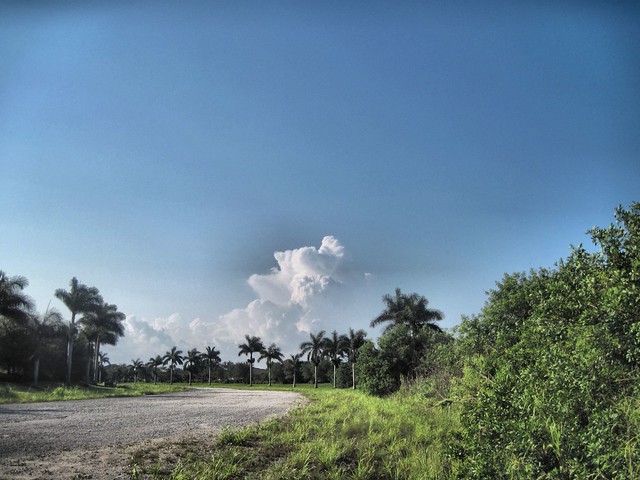
It was a female Common Ground-Dove, which retreated to the branches of a nearby tree.

I suspected that the bird had been tending a nest and I had surprised her. Not wanting to cause alarm, I made note of the location and continued walking along the road. On the way back I gave the area a wider berth, but kept a close eye on the spot from which the bird had flown. As I passed by it flew up once again.
The next morning I decided to find the nest. Keeping on the opposite side of the road, I slowly moved to within about 5 yards of the location, when my shadow startled the bird into flight. Using my telephoto lens, I scrutinized the immediate surroundings and spotted the nest, which held two very round white eggs.
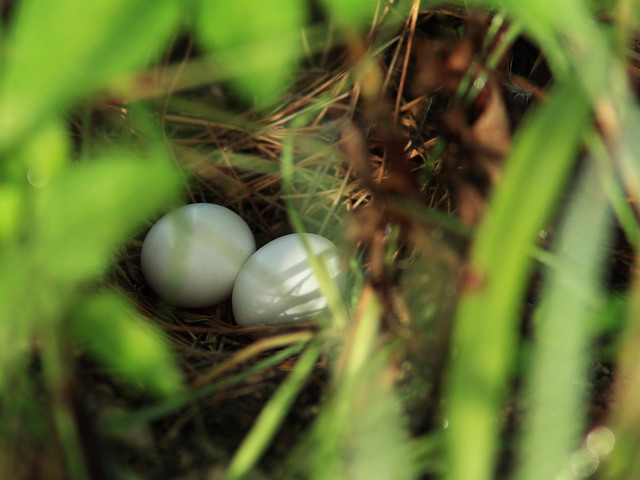
The nest, no more than a flimsy platform of grass stems, was well-concealed, on the ground at the base of a broad-leafed weed among the foot-high grasses. There has never been any doubt that this species breeds locally, but according to the Breeding Bird Survey coordinator, it was the first documented finding of a Common Ground-Dove nest in Broward County.
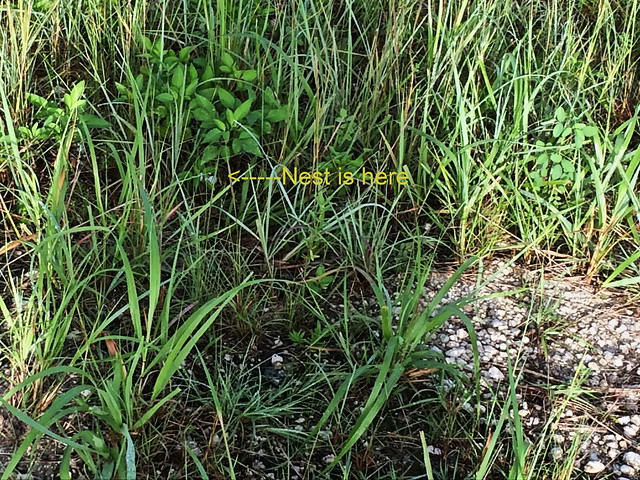
Although this path is commonly used by hikers, dog walkers and cyclists, I took care not to use it and also not to back-track my steps to its vicinity, but rather take my photos and continue along. I monitored the nest daily for the next nine days, hoping to note the day of hatching and possibly follow the development of the hatchlings. They are born blind and helpless but grow rapidly and are flight-ready at about 11 days of age.
Unfortunately, the landscapers began their task of "beautifying" the roadway. Their mowers had stopped only several yards short of the nest site, but when I checked the nest the next day it was empty. I believe that scavengers such as Opossums or Raccoons were attracted by the availability of rodents and snakes killed by the mowers, and they happened across the nest. It mattered little, because later that day the "landscrapers" finished their job, cutting the vegetation down to the bare ground and leaving no trace of the nest.
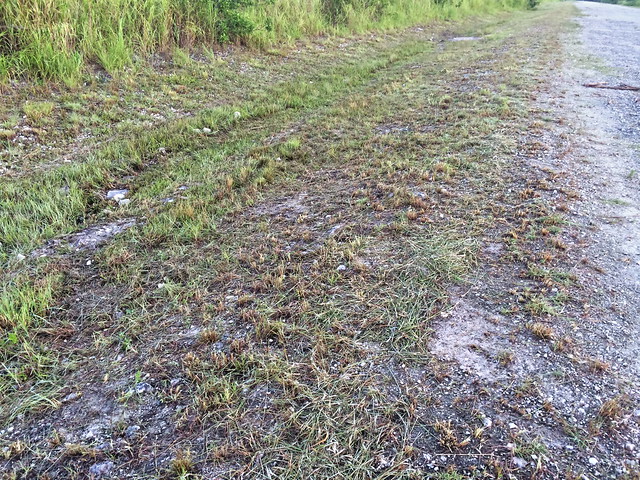
Following this disappointing outcome, I was heartened by a third "good thing." On a brief visit to nearby Chapel Trail Nature Preserve, we found a newly-arrived flock of over a dozen migrating Eastern Kingbirds. Among them were several first-year birds with brown backs and dark face and heads. Adults are all black above. The younger birds somewhat resemble the Gray Kingbird, but are smaller and have shorter bills. Gray Kingbirds are usually found in coastal areas, and we are 18 miles west of the Atlantic Ocean.

On our way home from Chapel Trail we stopped at a rain puddle in front of a school. It sometimes yielded waders, as I reported earlier in Life in a Puddle, but we found none. Exiting the driveway we had to wait for traffic, and I looked up and saw this bird on a wire directly overhead. Compare its bill size with that of the Eastern Kingbird, and note its black mask.

It was the first Gray Kingbird I have ever found in the western suburbs of Broward County, Florida. When I checked the eBird data I learned there had been only three reported sightings of this species in the County's inland corridor west of I-75 and east of US-27 during the past 10 years.
It eyed a passing dragonfly, but decided not to chase it.
